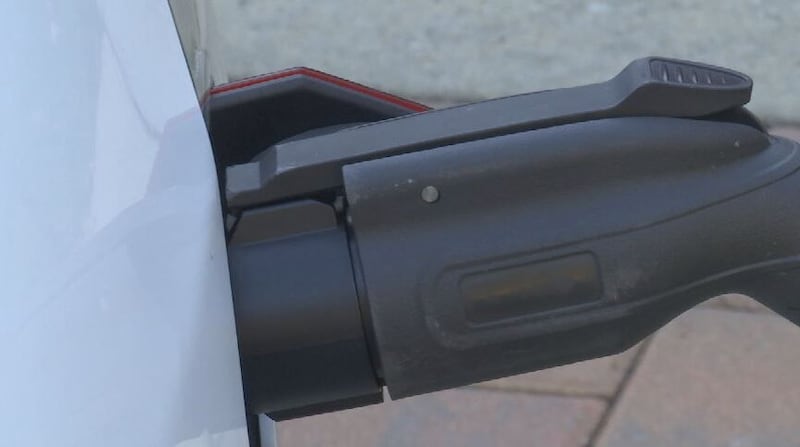CHARLOTTE — In the Carolinas, every time we flip a switch, turn on the AC, or run our laundry, we have nuclear power to thank. Representing about a third of the electricity generation in North Carolina and more than half in South Carolina, it’s by far the largest source of carbon-free power in the region.
With the world aiming for carbon-neutral power generation by 2050, in accordance with the Paris Agreement, the United States signaled its commitment to achieving that goal at COP 28, joining more than 30 countries in calling for the world to triple its nuclear power generation by 2050. Yet, there’s one massive problem with the U.S. nuclear goals. Just one nuclear reactor has been built from scratch in nearly 40 years.
How did the U.S. get behind on nuclear?
As the power developed in the 60′s and 70′s, nuclear seemed like a promising alternative to fossil fuel generation and a ticket to energy independence for the United States, but increased fear about the technology and its waste material, especially in the wake of the Three Mile Island accident (1979) and Chernobyl (1986) led to increasingly strict regulations.
More regulations meant higher construction costs, especially as many of those new regulations came down as reactors were getting built, sometimes requiring rebuilds. These reactors also had to be built on location, meaning different projects were subject to different state regulations, preventing a streamlined construction method.
Ultimately, this meant, by the 90′s, it was so cost-prohibitive to build a nuclear reactor, many projects and plans were abandoned.
The last reactor to come online in the Carolinas, was commissioned in 1987, the Harris Nuclear plant. It was built for three reactors, just one finished the construction process.
Where are things at now?
In the 2000′s there was an effort to bring back nuclear energy but by then a lack of nuclear infrastructure and a limited supply chain for construction of these reactors meant it was very expensive to get these projects off the ground. Dozens, including a few new plants and reactor projects in the Carolinas were scrapped due to cost and in one case, corruption.
Just the Vogtle units in Georgia continued to fruition. Georgia Power commissioned the first of which this spring, years behind schedule and billions of dollars over budget. Now ratepayers are seeing some of those costs tacked onto their energy bills.
Scientists hope new technology called small modular reactors (SMRs) can be the answer. The theory is that these reactors, built on a smaller scale can be made offsite, under a process like an assembly-line, then delivered to a plant. Because of their size, utilities can also install SMRs in areas that may not have previously been suitable to a full-scale nuclear plant.
Duke Energy is currently planning to use SMRs to replace a coal facility in Stokes County, by the mid-2030s.
The catch: Currently there are no SMRs in operation, or even fully built in the United States. Just last month, NuScale, which was promised $1.35 billion in Department of Energy funding, canceled the country’s first SMR project to get regulatory approval, as its budget ballooned.
Will this work in the Carolinas?
That is the question.
Environmental advocates from NC Warn like Jim Warren, who have opposed nuclear projects in the Carolinas for years, believe the SMR project is a pipe dream at best and at worst a distraction that’s keeping Duke Energy from investing in clean technology that does work.
“It’s far too expensive, it’s far too dangerous and it’s far too slow to help anybody with this climate crisis,” he said.
Warren believes instead, Duke should spend that money on expanding solar and solar storage projects, to make the renewable generation more plentiful, reliable and accessible.
Advocates of the technology like James Walker, the CEO of NANO Nuclear, believe not only is the technology possible, but it’s necessary to create a carbon-free generation source that can run anytime or anywhere.
“The reason why we’re here now and the world’s come to the conclusion we need triple is we spent decades going after other options like wind and solar and they haven’t paid off in the ways we’d hoped for,” he said. “They didn’t have the consistency and the capacity factor, they were too locationally dependent. It doesn’t give you the energy security the country wants.”
NANO Nuclear is currently working on a smaller version of an SMR called a microreactor, which Walker hopes will be even easier and less expensive to build. To get there though, he said he believes the country needs more time to build its nuclear infrastructure back up and it will likely take until the end of the decade before SMRs hit the U.S. power grid.
Duke Energy declined to comment on their planned SMR facility, but in a statement spokesperson Bill Norton said this of the company’s investment in nuclear: “A diverse resource mix including new nuclear – which is the only carbon-free generation that’s available 24 hours a day – is absolutely critical to maintaining the Carolinas’ competitive advantage.”
VIDEO: Electric vehicles are taking off but unreliable charging could stand in the way
©2023 Cox Media Group










